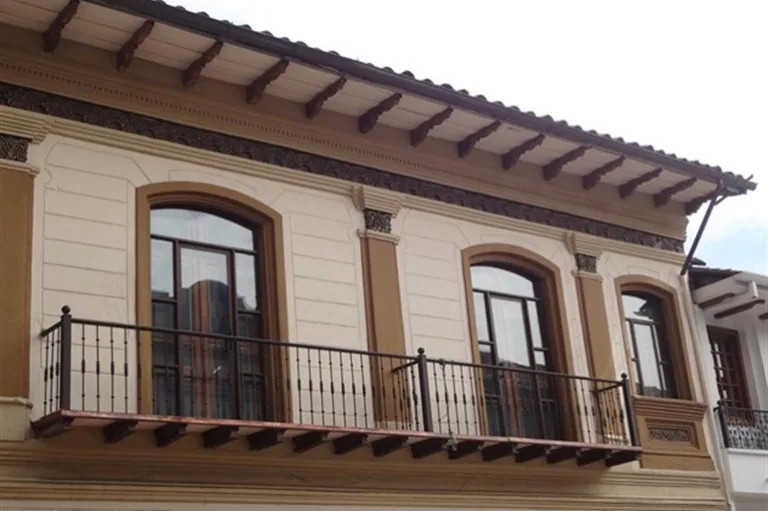Ecuador celebrates ‘First cry for independence’ with a a three-day weekend but what was the ‘first cry?’

Ecuador’s ‘first cry of independence’ was sounded on August 10, 1809. Those who made the call paid with their lives, slaughtered in Quito by Spanish guards.
Editor’s note: Although the anniversary of Ecuador’s ‘first cry for independence’ was August 10, it will be celebrated in most of the country on Friday, August 12, as part of a three-day weekend.
By Robert Bradley
Officially, yesterday was the 213th anniversary of Ecuador’s independence day, but was it reallly? That was the day when the so-called Sovereign Junta formed to oppose Spanish rule. Or, was the real indepdendence day the first meeting of the Congress of Deputies that decreed independence on December 11, 1812? Or, was it the Battle of Pichincha in 1822, that now-mythical clash on the flanks of Quito’s Pichincha volcano that saw liberator Simon Bolivar finally vanquish the Spanish?
And then there were military independence victories for Ecuador’s three major cities, Quito, Cuenca and Guayaquil, each celebrated with their own national holiday.
The reality is that it was a revolution lasting over a decade, filled with setbacks, hardship and lots of spilled blood.

It would be 12 years after the “First Cry” that Ecuador gained its independence at the Battle of Pinchicha, led by Cuenca native son Abdon Calderon.
But the “First Cry of Independence” (Primer Grito de la Independencia), celebrated as a national holiday this weekend, is one of the most symbolic of all national moments, given that it was the very first time that Ecuadorians — actually, Spanish colonists, most of whom had been born in the Americas and considered independence to be their birthright — expressed their wish to rid themselves of their Spanish yoke.
Ecuador’s first attempt at independence was set against the backdrop of what the revolutionaries considered a weakened Spain, then battling the Napoleon-led French army in the protracted Peninsula War (1808-1814).
In the dead of night of August 9, 1809, a group of intellectuals, doctors, marquises and creoles plotted in Quito, in the house of Manuela Cañizares, a stalwart of the city’s literary and political scenes. It was here that the conspirators committed to organizing a Supreme Government Junta, appointing Juan Pio Montufar as president, the Marques of Selva Alegre as Vice president, and Bishop José Cuero y Caicedo as Secretary of State.
Whipping the group into a frenzy, Manuela is said to have cried: “Cowards! Men born to serve, what are you afraid of? There is no time to lose!”
The next morning of August 10, 1809, one of the group named Antonio Ante went to the president of the Royal Audiencia, Manuel Ruiz, the Spanish Count of Castilla, to inform the Spaniard that the crown was relieved of its functions, and that the Sovereign Junta of Quito was taking over.
The event became known as the “First Cry of Independence.”
Functionaries of the city declared themselves in favor of the insurrection, including each Creole neighborhood representative, rejecting the Spanish audiencia authority and recognizing the Supreme Junta as an interim government “in the name and as a representative of our sovereignty, Mr Fernando Septimo, and while His Majesty recuperates the peninsula or comes to rule in America.”
The revolution of 10 August 1809 left no ambiguities about the autonomous and liberating nature of the movement, barely disguised with a half-hearted declaration of loyalty to the king.
The revelry of newfound freedom would not last long.
On October 28, 1809 the Junta resigned, handing power to Spanish loyalist Juan Jose Guerrero, Count of Selva Florida, who swiftly returned power back to Count Ruiz de Castilla.
The revolutionaries were rounded up and thrown in prison.
Almost a year to the day later, on August 2, 1810, an attempt to liberate them from prison failed spectacularly, ending in a terrible massacre. All the key players, including Morales, Quiroga, Salina, Larrea, Arena, Riofrio, Ascasubi, Guerrero, Villalobos and others killed with bayonets by troops. A violent crackdown of city ensued in which 300 Quiteños died. The carnage only ended after the bishop and priests took to the streets and pleaded with the soldiers.
Carlos Montafur, the son of Marquis of Selva Alegre, was appointed by the Regency Council of Spain to end climate of repression, but his sympathies gravitated towards his father’s – the path towards independence. He helped to organize the second Superior Government Junta, made up of Creoles, on 15 February, 1812 the first constitution was drawn up.
It would be 10 more years before Ecuador officially gained her independence on May 24, 1822, as a result of the Battle of Pichincha.





















